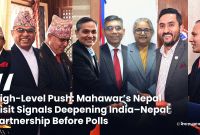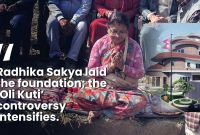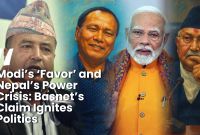The Man Who Counted Heads in Disputed Limpiyadhura: Journalist Bhairav Rishal Passes Away at 97

Nepal has lost a living embodiment of its sovereignty. Bhairav Rishal, the veteran journalist, author, and social crusader who once ventured deep into the disputed territories of Limpiyadhura, Kalapani, and Lipulekh to conduct a historic census, passed away on Saturday night at the age of 97. He died while undergoing treatment at Frontline Hospital in Kathmandu due to heart and lung complications.
Born on August 13, 1928 (1985 BS, Saun 29) in Tithali, Bhaktapur, Rishal devoted his life to journalism, literature, and national service. But among his numerous accomplishments, one stands out as a bold statement of Nepal's territorial claim: the 2018 BS census he led in the strategically sensitive and now-disputed northwestern frontier of Nepal.
The Man Who Dared to Walk into Disputed Territory
At a time when Nepal’s borders with India were far from clearly demarcated, Bhairav Rishal undertook a dangerous and symbolic journey. Handed a hand-drawn map by then Central Bureau of Statistics Director Thir Bahadur Rayamajhi, Rishal and his team walked into what is today considered a disputed zone with India.
In his memoir, he recounts:
“We conducted a full census of the villages around Limpiyadhura because that was — and is — an inseparable part of Nepal. I was there. I am a living proof.”
He further elaborated with geographical precision, affirming Limpiyadhura as the source of the Mahakali River and therefore, based on the 1815 Sugauli Treaty, a rightful part of Nepal. His logic was rooted not just in history but in hydrology, arguing that the stream from Limpiyadhura had the longest flow, widest catchment area, and strongest volume — all criteria that confirm it as the river’s true origin.
A Living Document of Sovereignty
His memoir dedicates nearly 10 pages (pp. 240–249) to this extraordinary expedition. It describes how his team, having crossed through Indian territory, reached Doti in Nepal to celebrate “Census Day” on Asar 8, 2018 BS. His path passed by the Sharada Barrage and the controversial Tanakpur dam — firsthand experiences that add weight to Nepal’s territorial claims today.
His documentation of Nepali presence and government activity in Limpiyadhura serves as a rare and powerful proof of Nepal’s historic reach — a fact often overlooked in modern boundary disputes with India.
Journalist, Storyteller, and Servant of the People
Beyond geopolitics, Bhairav Rishal was a household name in journalism. He served as Chief News Editor of the national news agency, RSS, and hosted the popular radio program Uhiley Bajeyka Palama on Radio Sagarmatha, reviving forgotten social narratives. His books — Sadhulai Suli, Logne Swasni, Kehi Mitraka Chithi, and Bhairav Dai — remain vivid portraits of Nepali life and values.
He also led Nepal Forum of Environmental Journalists (NEFEJ) and worked for various development and agricultural projects across districts like Ilam, Rolpa, and Sankhuwasabha under NGOs, embodying grassroots transformation.
End of an Era
Rishal had visited nearly every district in Nepal. His lived experiences are woven into the country’s political, geographical, and cultural fabric. With his passing, Nepal has lost not just a writer, but a witness — someone who literally walked through history and left behind proof of it.
His legacy — particularly his fearless work in Limpiyadhura — will remain a cornerstone in Nepal’s battle for territorial justice.
Bhairav Rishal’s life was a map — one that never forgot where Nepal truly begins.




![From Kathmandu to the World: How Excel Students Are Winning Big [Admission Open]](https://nepalaaja.com/img/70194/medium/excel-college-info-eng-nep-2342.jpg)
